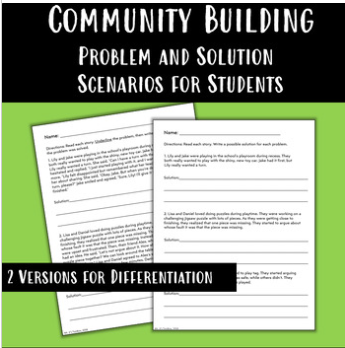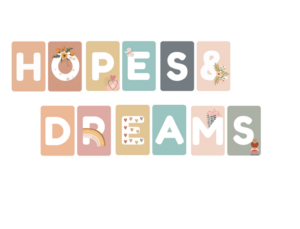Teaching conflict resolution is one of the most important skills we can impart to our students. Conflicts are inevitable in the classroom, but how students handle them can shape their social-emotional growth and success. The best strategies I have found to make a lasting impact in the classroom are the approaches found in Responsive Classroom: Role Play. Using role play is a powerful way to teach students how to resolve disagreements respectfully and collaboratively.
Why Role Play Is the Best Way to Teach Conflict Resolution
Role play offers an immersive, hands-on experience for students to practice problem-solving in a safe, supportive environment. Here’s why it works so well:
Active Learning: Role playing allows students to “live” through the experience of resolving conflicts. Instead of just talking about how to handle issues, students actively practice the language and behavior that will help them navigate real-life situations.
Builds Empathy: By playing different roles in a conflict (whether as the person experiencing the problem or the one hearing a concern), students develop empathy. They learn to see conflicts from multiple perspectives, which is key to understanding and resolving disagreements fairly.
Promotes Positive Communication: Through role play, students practice using I-statements—a core communication tool in the Responsive Classroom approach. These statements encourage students to express their feelings and needs without blaming or accusing, making it easier to resolve conflicts calmly.
Boosts Confidence and Self-Regulation: Practicing conflict resolution strategies in role play helps students build the confidence to handle difficult social situations on their own. It also teaches them self-regulation, a critical skill for maintaining composure during emotionally charged moments.
The Role of I-Statements in Conflict Resolution
The Responsive Classroom framework encourages the use of I-statements to express feelings and concerns during conflicts. I-statements help students take responsibility for their own emotions while communicating their needs without accusing or escalating the situation. They usually follow this format:
- “I feel ______ when ______ because ______.”
For example:
- “I feel upset when you take my markers without asking because I like to keep my things organized.”
I-statements help shift the focus from blaming others to expressing feelings in a way that opens the door for problem-solving. They also help students understand the impact of their actions on others, building accountability and promoting respectful communication.
How to Teach Conflict Resolution Through Role Play: Step-by-Step
Here’s how you can incorporate role play into your classroom to teach conflict resolution, using the Responsive Classroom framework:
1. Set the Stage
Begin by explaining to students that everyone experiences conflicts, and that role play will help them practice solving conflicts peacefully. Emphasize that this is a learning opportunity, not a judgment of anyone’s behavior. Reassure them that everyone will have the chance to practice and improve.

2. Introduce I-Statements
Teach students the structure of I-statements:
- “I feel ___ when ___ because ___.”
Discuss how using these statements helps communicate feelings and concerns respectfully. You can create a chart with examples that students can refer to during role play.
3. Model a Role Play
Before asking students to dive into their own role plays, model a scenario with another teacher or student volunteer. For example, you might act out a situation where one student is pushing in line, and the other needs to address the behavior.
- Student A: “I feel frustrated when you keep pushing me in line because it makes me lose my place.”
- Student B: “I heard you say you feel frustrated when I keep pushing you in line. I didn’t realize I was doing that. I’ll give you more space.”
After the model, pause and ask students what they noticed:
- How did the student express their feelings?
- How did the other person respond?
4. Choose Realistic Scenarios
Next, break the class into small groups or pairs. Provide realistic conflict scenarios that students might encounter in their daily lives. Encourage students to come up with different ways to solve the scenario.
5. Guide Students Through the Role Play
As students engage in role play, encourage them to use I-statements and the steps they’ve learned to communicate their feelings and work towards a solution. Circulate the room and offer guidance if needed, reminding them to stay calm, listen, and respond respectfully.
For instance, in a scenario where one student takes another’s materials, guide them:
- Person A: “I feel upset when you take my pencil without asking because I need it to finish my work.”
- Person B: “I heard you say you feel upset when I take your pencil without asking. I’m sorry. I should have asked first. Can I use it when you’re done?”
6. Reflect and Debrief
After role playing, bring the class together for a debrief. Ask students reflective questions, such as:
- How was this helpful in solving problems?
- Are there more than one way to solve a problem?
Encourage students to share what they learned and how they might handle real conflicts in the future.
7. Reinforce the Skills
Practice makes perfect! Conflict resolution isn’t a one-time lesson. Incorporate role play into your classroom regularly, especially when you notice conflicts arising. The more students practice these skills, the more automatic they will become.
Conclusion
Role play is one of the most effective ways to teach students how to resolve conflicts because it allows them to practice real-world skills in a supportive, low-pressure environment. Using the Responsive Classroom approach and I-statements, students learn to express themselves clearly, listen to others, and find mutually respectful solutions. By giving students these tools early on, we empower them to navigate social challenges with confidence, empathy, and respect—both in and out of the classroom.





